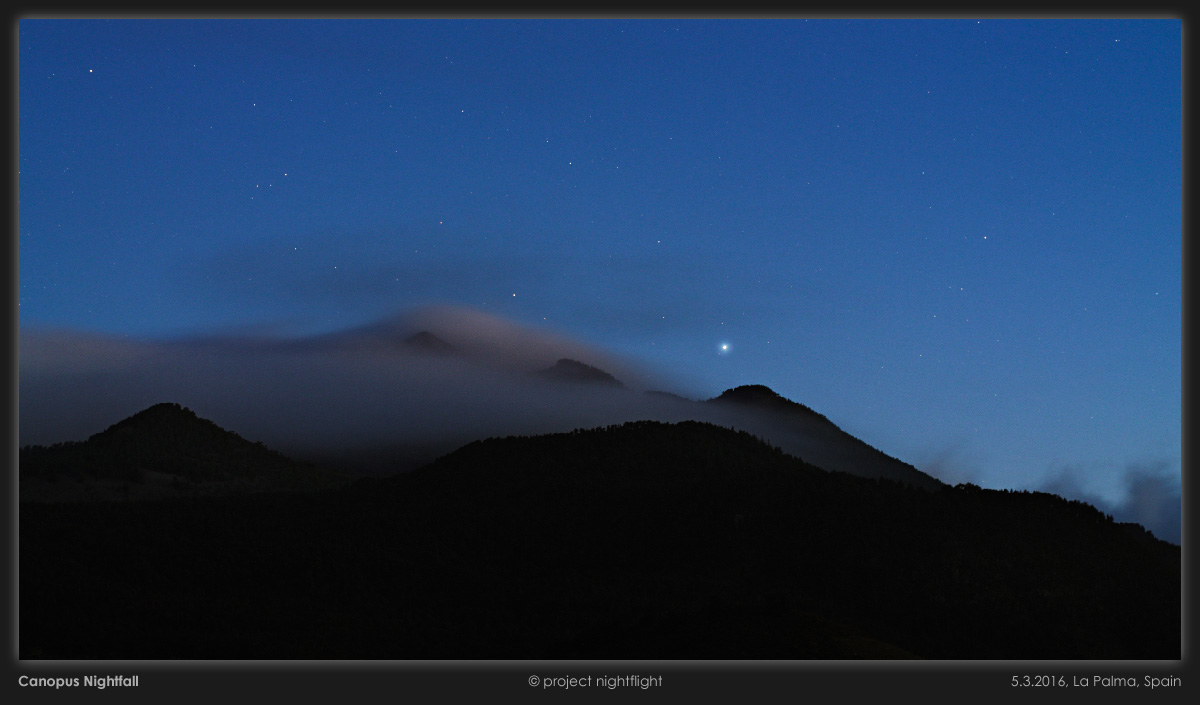Sci-Fi Comes Alive: 'Dune' Star Photographed Above Volcano

The desert planet Arrakis is imaginary — from the famous science fiction series "Dune" — but the star it's said to orbit is real: Canopus, the second brightest star as seen from Earth. Here, Canopus shines above a volcano range on La Palma, Canary Islands.
An effort called project nightflight, led by astrophotographers Karoline Mrazek and Erwin Matys, captured the photo on May 3, 2016. The photographers used image stacking and a diffusor filter to create the image's striking views of the La Palma landscape and the shining star. The project promotes interest in and conservation of the night sky, and its work can be found online at www.project-nightflight.net.
Canopus is likely 313 light-years away from Earth, and because of the object's brightness, it is useful in spacecraft navigations. The star is visible from February into the spring for latitudes up to 35 degrees north, project nightflight told Space.com in an email.
In this photo, the "Dune" star hangs over a setting not so dissimilar from the Spice-mining planet author Frank Herbert imagined orbiting the star. But in the books, enormous, deadly sandworms terrorized that planet.
"Although the often-barren, sandy dunes of the volcanoes on the Canary Islands sometimes remind us of [the series' first main character] Muad'Dib's Dune planet, there were absolutely no wormsigns near or far," project nightflight said.
Email Sarah Lewin at slewin@space.com or follow her @SarahExplains. Follow us @Spacedotcom, Facebook and Google+. Original article on Space.com.
Get the Space.com Newsletter
Breaking space news, the latest updates on rocket launches, skywatching events and more!
Join our Space Forums to keep talking space on the latest missions, night sky and more! And if you have a news tip, correction or comment, let us know at: community@space.com.

Sarah Lewin started writing for Space.com in June of 2015 as a Staff Writer and became Associate Editor in 2019 . Her work has been featured by Scientific American, IEEE Spectrum, Quanta Magazine, Wired, The Scientist, Science Friday and WGBH's Inside NOVA. Sarah has an MA from NYU's Science, Health and Environmental Reporting Program and an AB in mathematics from Brown University. When not writing, reading or thinking about space, Sarah enjoys musical theatre and mathematical papercraft. She is currently Assistant News Editor at Scientific American. You can follow her on Twitter @SarahExplains.











